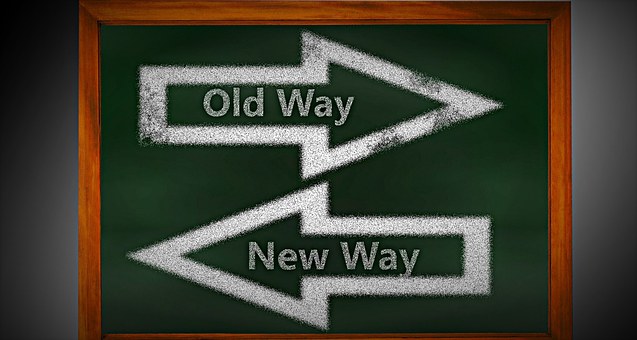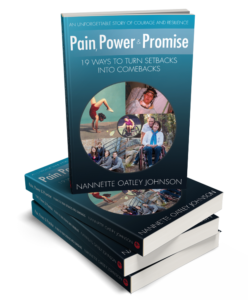
It is a paralyzing moment when trauma and loss shocks then freezes our minds and bodies into a zombie-like existence. Our equilibrium is shattered and life comes undone; whether it is the loss of a job, or worse, the loss of a loved one.
Suffering is everywhere. It’s unavoidable, and its overarching influence often overwhelms. I too, could not escape its reach. In a February 1982 moment in time, life as I knew it instantly and irreversibly changed.
I was an energetic 22-year-old peering down a vibrant road of possibilities. I positioned myself next to my boyfriend on a big, inflated tractor-size inner tube. The teens in front of us tubed down the snow with excited laughter. We, too, squealed with delight as we lay on our stomachs, pushed off with our feet, and headed down the hill. After following the same path as the other snow enthusiasts, we then veered to the right. With two of us on the tube, and the momentum increasing, it was a matter of seconds before we found ourselves airborne and then pulled by gravity into a rapid decent. We had soared over the edge of a giant boulder.
Flying through the air on our stomachs, our arms wrapped tightly around the tube and each other-we hit the hard-packed snow with a jolt. The trampoline effect catapulted me back into the air. Somersaulting, I tucked my head as any trained gymnast would do, but the hard-packed snow crushed my vertebrae on impact. Within seconds, like the rising mercury in a thermometer, I felt the paralysis begin in my furthest extremities—then creep up my legs, my waist, and my chest. Like the bird I had seen slam into our sliding glass door when I was a child, I, too, lay wounded and motionless with a broken neck.
A couple stanzas from a piece of poetry I wrote years later captured the unfolding trauma:
Sirens, firemen and paramedics
lifting me onto a wooden gurney,
Drifting in, drifting out, where am I now?
Cold, so very cold, yet warmed
by the compassion of strangers.
Air-lifted to Loma Linda Medical Center, en route
three quarters of me died,
while a fourth struggled to live.
Four months this would be my domicile.
Occupational therapy, physical therapy,
R-E-H-A-B-I-L-I-T-A-T-I-O-N,
Someone else lifting my legs,
Someone else brushing my teeth,
Someone else wiping my ass.
When I was discharged as a now sit-down person in a stand-up world, my philosophical struggles came in rapid fire. Questions like: How does life undergo such a massive and monumental change without any warning? Why do bad things happen to good people? Why are we subject to so much tragedy? Why is life so unfair? God, why didn’t you intervene? And, ultimately, a very normal response, why me?
If you know anything about Kubler-Ross’s 5 stages of dying (denial, anger, bargaining, depression, acceptance) and I do consider my injury a death as I died to my former self, you will find my first Resilient Response to life in reverse. But being a philosophical and existential thinker, I had to go the way of the dark night of the soul and scavenge around in the rubble to unearth pain’s first hidden pearl.
If you are reading my blog in sequential order, you’ll learn more specifically how my life unfolded but it is this first Resilient Response to life’s pain and suffering that I come back to again and again when life instantly and irreversibly changes, again.
What I figured out in my 20’s holds true today, decades later, and its truth is enduring.
In 1986, 4 years after my injury, the movie, The Mission, with Robert DeNiro and Jeremy Irons was released. The movie, based on actual historical events, is heart wrenching and deeply disturbing psychologically, philosophically, and spiritually, yet profoundly true. The role of the protagonist (DeNiro), a mercenary-turned Jesuit Priest- turned killer, and the antagonist, (Irons) a mentor and longtime Jesuit, was intense, conflicted, beautiful and deadly. read chapter one here.
What the movie did for me was consolidate four years of existential angst and bring it into a cohesive whole. Thoughts about God: his sovereignty, his paradoxical nature, universal suffering, humanity’s limited understanding, fairness and unfairness all coalesced. I reached a conclusion about the world and my own personal tragedy.
Suffering is not a problem to be solved but a mystery to endure.
What I dug out of the wreckage was pain’s first hidden pearl. In order to live resiliently I needed to:
“Accept the Paradoxes Inherent in Life.”
And it isn’t just life that is paradoxical, God is too. Just one of God’s paradoxical characteristics is His nature as both Warrior and Peacemaker. Life consists of joy and sorrow, goodness and evil, fair and unfair realities.
In, A Grace Disguised Sittser poignantly describes the journey of paradox, “the quickest way for anyone to reach the sun and the light of day is not to run west, chasing after the setting sun, but to head east, plunging into the darkness until one comes to the sunrise.”
Yet there is one ray of hope: his compassion never ends. It is only the Lord’s mercies that have kept us from complete destruction. Great is his faithfulness; his loving-kindness begins afresh each day.” Lam. 3:22-23
May you find a new mercy today as you accept the mystery of paradox,
Nannette



Hello Nanette
I just read this thru, this time all the way and I love the way you’ve expressed the deepest pain here! and that also you know, His mercies are new every morning! Our Prodigal, Justin, 34, is still made at God for Jasons death and now suffers with the same ALD Disease.
Pray with me he’ll hear the Spirits voice calling him! When he stareted using a cane his fiance left & its been a lot of sadness on this road for him. He has done Stem Cells but not seeing any great changes, and The Cost!
Blessings on you, Cheryl
Beautiful Cheryl, You, your husband and family have carried the pain and sorrow of not one, but two beloved sons stricken by the same disease. In my original Inspirational Card packet of 12, I have one card whose prose is repeated because it is so profound and powerful that I needed to offer it not once but twice in the bundle. I offer it now to you.
“Pain is a language without words,
And so it goes untouched by words.
Does it help for you to know, that my prayers for you are wordless too;
and shaped like tears.”
WOOOOW!
What beauty and hope you have written . I’m stunned, humbled , renewed and interested in finding GOD one more time , examining the lines in His face and the scars on His hands and feet and anxious to know HIM yet it’s frightening . He has given is such an extreme expierience . We are in His hands .
Hey Gina,
thanks so much for your beautiful comment. We are in His hands and we each carry our own cross.